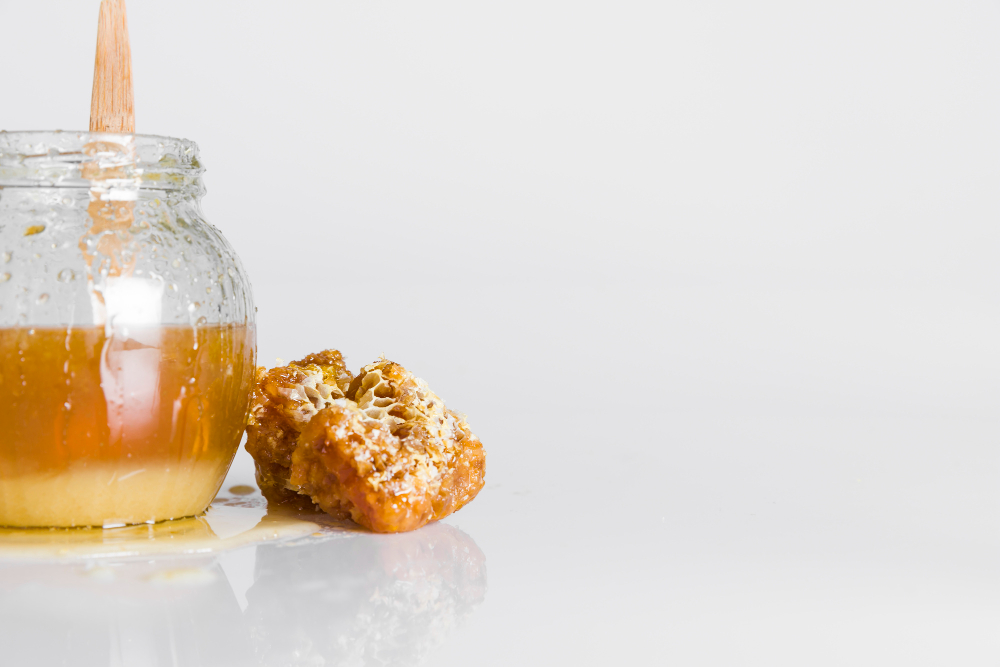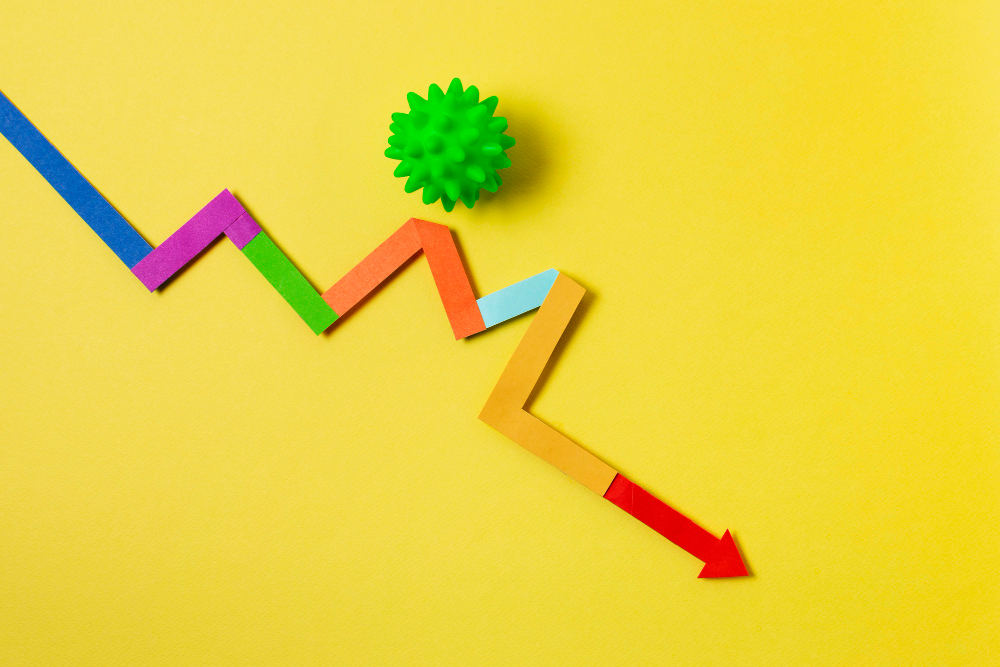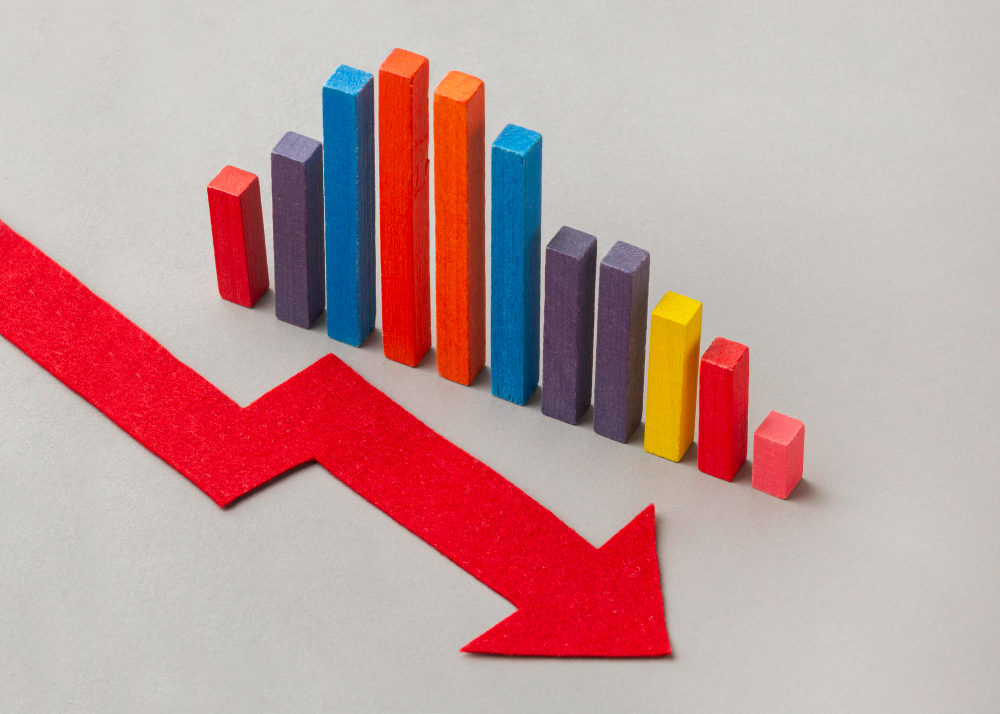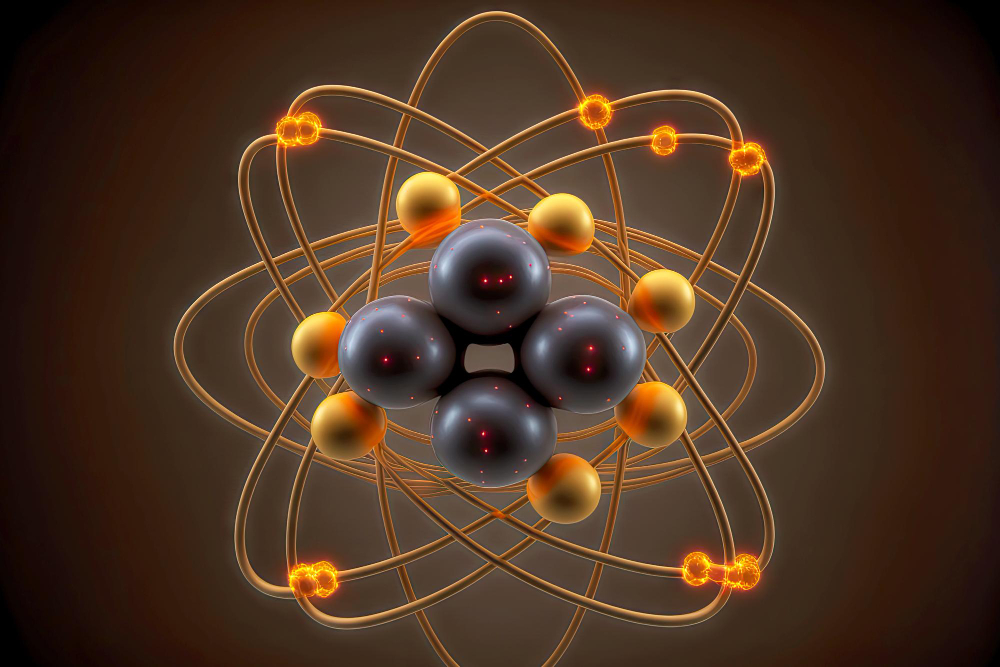
Finding the Best Light Orange Lipstick Shades
In the realm of cosmetics, where trends come and go like fleeting seasons, one hue has managed to stand the test of time — light orange lipstick. This vibrant, cheerful shade has the power to brighten up any complexion, adding a touch of warmth and radiance to your look. Whether you’re aiming for a subtle hint of citrus or a bold burst of sunset, finding the perfect light orange lipstick can be a transformative experience. Let’s delve into the world of light orange lipsticks and discover some of the best shades that can elevate your makeup game to new heights.
A Splash of Sunshine
Light orange lipstick holds a special allure, reminiscent of sun-kissed days and balmy evenings. This shade effortlessly captures the essence of summer, infusing your lips with a youthful, vibrant energy. Its subtle warmth complements a wide range of skin tones, making it a versatile choice for any occasion. Whether you’re heading to a beach party or a glamorous soirée, a swipe of light orange lipstick can instantly elevate your look, exuding confidence and style.
The Quest for the Ideal Shade
With countless options available on the market, finding the best light orange lipstick can feel like searching for a needle in a haystack. From peachy corals to tangy tangerines, the spectrum of light orange shades is as diverse as it is enchanting. To discover your perfect match, consider factors such as your skin tone, undertones, and personal preferences. Experimenting with different shades and finishes can help you narrow down your options and find the one that speaks to you.
A Subtle Hint of Sweetness
For those who prefer a more understated look, peachy orange lipsticks offer a delicate balance of sweetness and sophistication. These soft, muted hues provide a subtle pop of color, perfect for everyday wear or minimalist makeup looks. With their creamy textures and luminous finishes, peachy orange lipsticks glide effortlessly onto the lips, imparting a natural, healthy glow. Pair them with dewy skin and fluttery lashes for a fresh, youthful appearance that’s effortlessly chic.
A Bold Burst of Citrus
If you’re craving something bolder and more daring, look no further than tangy tangerine lipsticks. These vibrant, electrifying shades command attention, making a striking statement wherever you go. With their rich pigmentation and high-impact color payoff, tangerine lipsticks are perfect for special occasions or when you want to add a touch of drama to your look. Pair them with a sleek cat-eye and tousled waves for a glamorous ensemble that exudes confidence and charisma.
Exploring Different Finishes
One of the joys of experimenting with light orange lipsticks lies in exploring different finishes and textures. Whether you prefer a velvety matte or a luscious gloss, there’s a finish to suit every mood and occasion. Matte lipsticks offer long-lasting wear and a sophisticated matte finish, perfect for creating bold, statement-making looks. On the other hand, glossy lipsticks provide a juicy, lustrous sheen that plumps up the lips and adds dimension to your pout. Mix and match different finishes to create custom looks that reflect your unique style and personality.
Complementing Your Lipstick with the Right Makeup
To make the most of your light orange lipstick, it’s essential to pair it with complementary makeup that enhances its beauty. For a fresh, summery look, opt for bronzed cheeks, golden highlighter, and a wash of shimmery eyeshadow in warm, earthy tones. Keep the rest of your makeup minimal to let your lipstick take center stage, focusing on flawless skin and subtly defined eyes. Experiment with different makeup combinations to find the perfect balance that accentuates your features and brings out the best in your light orange lipstick.
Expressing Yourself Through Makeup
At its core, makeup is a form of self-expression — a creative outlet through which we can showcase our individuality and personality. Whether you gravitate towards soft, romantic hues or bold, vibrant shades, the most important thing is to embrace what makes you feel confident and beautiful. Light orange lipstick is more than just a cosmetic product; it’s a symbol of empowerment and self-assurance, reminding us to embrace our uniqueness and celebrate our inner light.
Let Your Light Shine Bright
In the world of beauty, few things hold as much transformative power as a swipe of lipstick. Light orange lipstick, with its cheerful hue and radiant energy, has the ability to uplift and inspire, leaving a trail of sunshine wherever it goes. Whether you prefer a subtle hint of sweetness or a bold burst of citrus, there’s a light orange lipstick out there waiting to dazzle you with its brilliance. So go ahead, embrace the radiance, and let your light shine bright for all the world to see.

How to Let Someone Down Easy
Breaking the news to someone that you’re not interested in pursuing a romantic relationship with them can feel like tiptoeing through a maze of emotions. It’s a delicate balance between being honest and empathetic, while also preserving the other person’s dignity and emotions. So, how do you navigate this maze of rejection with grace and kindness? Here’s a comprehensive guide on how to let someone down easy, ensuring both parties walk away with their hearts intact.
Choosing the Right Environment
The first step in letting someone down easy is setting the stage for the conversation. Choose a private and comfortable environment where both of you can speak openly and honestly. Avoid public places or crowded events, as they can amplify the discomfort of the situation. By selecting the right setting, you create a safe space for a respectful and compassionate exchange.
Honesty with Compassion
Communication is the cornerstone of any relationship, even when it comes to ending one. Be honest with the other person about your feelings, but deliver your message with compassion. Use “I” statements to express your emotions without placing blame on the other person. For example, instead of saying, “You did this wrong,” say, “I don’t feel a romantic connection.” This approach shows empathy and respect for the other person’s feelings.
Finding the Silver Lining
Expressing gratitude can soften the blow of rejection and highlight the positive aspects of your relationship. Take a moment to acknowledge the good times you’ve shared and the qualities you admire in the other person. Let them know that while you may not see a romantic future together, you value their presence in your life. This gesture of appreciation can help both parties find closure and move forward with grace.
Keeping It Classy
It’s important to refrain from assigning blame or criticizing the other person during this conversation. Instead of focusing on what went wrong, emphasize the importance of personal compatibility and chemistry in relationships. Avoid using harsh or hurtful language that may cause unnecessary pain. Remember, the goal is to end the relationship with dignity and respect for both parties involved.
Hearing Their Heart
Active listening is a powerful tool in any conversation, especially one as sensitive as letting someone down easy. Allow the other person to express their thoughts and feelings without interruption. Validate their emotions and offer reassurance that their feelings are valid, even if they differ from your own. This demonstrates empathy and respect, laying the groundwork for a more amicable separation.
Friendship, if Appropriate
Depending on the nature of your relationship, you may choose to offer friendship as an alternative to romance. However, be mindful of the other person’s feelings and boundaries. If they express a desire for space or time to process their emotions, respect their wishes without pressure or expectation. Leave the door open for friendship, but understand if they need time to heal.
Follow-Up with Kindness
After the initial conversation, follow up with a message of kindness and well wishes. Reaffirm your appreciation for their understanding and maturity during this challenging time. While it may take time for both parties to fully move on, maintaining a sense of goodwill can help to preserve the integrity of your relationship, even if it’s transitioning into a different form.
Navigating the delicate task of letting someone down easy requires empathy, honesty, and tact. By choosing the right setting, delivering your message with kindness, and offering appreciation and understanding, you can minimize the pain of rejection and foster a sense of respect and closure for both parties. Remember, it’s not just about ending a relationship, but about preserving the dignity and emotions of everyone involved.

How a Former Pro Takes Advantage by Doing an Easy Job
Transitioning from the fast-paced world of professional sports to seemingly easy jobs can be a challenge, but many former athletes find themselves excelling in unexpected careers. The transition requires a shift in mindset, leveraging skills honed on the field, and embracing new opportunities. Here’s a deeper dive into how former pros thrive beyond the field, turning seemingly easy jobs into fulfilling and successful endeavors.
From the Field to the Boardroom
Former professional athletes possess a treasure trove of transferable skills acquired during their careers. Skills like discipline, teamwork, leadership, and resilience are highly valued in any industry. Former pros understand how to work under pressure, adapt to changing circumstances, and overcome obstacles – qualities that are invaluable in the business world. By recognizing and capitalizing on these transferable skills, former athletes can excel in seemingly easy jobs, bringing a unique perspective and work ethic to the table.
Connections That Count
One of the greatest assets that former athletes have is their extensive network built over years of competing at the highest level. Teammates, coaches, agents, and sponsors become part of a vast web of contacts that can be leveraged in post-career pursuits. Whether it’s securing a job, seeking mentorship, or exploring business opportunities, former athletes tap into their network to open doors and navigate new industries. The relationships forged during their athletic careers become invaluable assets in their transition to seemingly easy jobs.
Growth Mindset in Action
Transitioning from a career in professional sports to an easy job doesn’t mean former athletes stop learning and growing. On the contrary, they understand the importance of continuous learning and skill development. Whether it’s pursuing further education, attending workshops, or seeking mentorship, former pros embrace opportunities to expand their knowledge and expertise. They approach their new roles with the same dedication and commitment that propelled them to success in their athletic careers, ensuring they stay ahead of the curve in their chosen field.
Pursuing Passion Projects
While professional sports may have been their primary focus, many former athletes discover new passions and interests outside the realm of sports. Whether it’s starting a business, getting involved in philanthropy, or pursuing creative endeavors, these passion projects provide a sense of purpose and fulfillment beyond the game. Former athletes channel their competitive drive and determination into these endeavors, leveraging their skills and experiences to make a positive impact in their communities and beyond.
Beyond the Grind
The demanding nature of professional sports often leaves little room for work-life balance. However, transitioning to seemingly easy jobs allows former athletes to prioritize their well-being and personal lives. They recognize the importance of maintaining a healthy equilibrium between work, family, and leisure activities. Whether it’s spending more time with loved ones, pursuing hobbies, or simply enjoying downtime, former athletes embrace the opportunity to live a more balanced and fulfilling life outside the confines of the game.
Beyond Wins and Losses
Success for former athletes extends beyond the scoreboard or the number of championships won. It’s about finding fulfillment and purpose in their post-career endeavors. Whether it’s making a positive impact in their community, mentoring the next generation of athletes, or pursuing personal passions, former pros redefine success on their own terms. They measure success not by external achievements, but by the fulfillment and happiness they derive from their chosen path.
Carpe Diem
Former athletes understand the value of seizing opportunities when they arise. Whether it’s a chance to explore a new career path, embark on a passion project, or pursue further education, former pros approach life with a sense of openness and curiosity. They embrace new challenges and experiences with the same determination and drive that fueled their athletic careers, leveraging every opportunity to grow and succeed in their post-career endeavors.
Excelling in Seemingly Easy Jobs
Transitioning from the world of professional sports to seemingly easy jobs is a journey filled with challenges and opportunities. Former athletes bring a unique set of skills, experiences, and perspectives to their new roles, allowing them to thrive and excel in unexpected careers. By capitalizing on transferable skills, leveraging their network, embracing continuous learning, and pursuing passion projects, former pros find fulfillment and success beyond the field. They redefine success on their own terms, embracing new opportunities and challenges with optimism and determination.

What Is an Easy Way to Encourage Students to Stay Hydrated?
Staying hydrated is essential for overall health and well-being, yet many students often overlook the importance of drinking enough water throughout the day. As educators, it’s crucial to find easy and engaging ways to encourage students to stay hydrated in the classroom. From interactive challenges to innovative water stations, here are some creative strategies to keep students’ thirst at bay and their minds sharp.
Be a Hydration Role Model
One of the most effective ways to encourage students to stay hydrated is by leading by example. Make it a habit to keep a water bottle on your desk and take regular sips throughout the day. When students see their teacher prioritizing hydration, they are more likely to follow suit. You can even incorporate discussions about the importance of hydration into your lessons, emphasizing its impact on cognitive function and overall health.
Turn Drinking Water into a Fun Challenge
Transforming hydration into a game can make it more engaging for students. Create a hydration challenge where students earn points or rewards for drinking a certain amount of water each day. You can use a leaderboard to track progress and encourage friendly competition among classmates. Incorporate incentives such as extra recess time or stickers for reaching hydration goals, making it a fun and rewarding experience for everyone involved.
Incorporate Movement and Hydration
Instead of traditional classroom breaks, incorporate interactive water breaks into your daily routine. Set aside time for students to stand up, stretch, and take a few sips of water. You can even lead short physical activities or mindfulness exercises to refresh their minds and bodies. By combining movement with hydration, you create a holistic approach to promoting health and well-being in the classroom.
Make Water Accessible
Make it easy for students to stay hydrated by creating a hydration station in the classroom. Set up a designated area with a water cooler or dispenser, cups, and reusable water bottles. Encourage students to fill up their bottles throughout the day and make it a habit to take a drink whenever they pass by. Having a convenient and accessible water source ensures that students have constant reminders to stay hydrated.
Jazz Up Water with Fruits and Herbs
Make drinking water more appealing by infusing it with natural flavors. Set up a DIY water infusion station where students can add slices of fruits like lemon, lime, or berries, along with fresh herbs like mint or basil, to their water bottles. Experimenting with different flavor combinations adds excitement to hydration and encourages students to drink more water throughout the day.
Teach the Science Behind It
Take advantage of teachable moments to educate students about the science of hydration. Discuss the importance of water for regulating body temperature, transporting nutrients, and maintaining overall health. You can incorporate hands-on experiments or demonstrations to illustrate concepts such as osmosis and hydration levels in different foods. By empowering students with knowledge, they gain a deeper understanding of why staying hydrated is essential.
Use Technology to Promote Hydration
Incorporate technology to remind students to drink water regularly. Use apps or online tools that send hydration reminders at scheduled intervals throughout the day. You can also set up visual cues in the classroom, such as posters or digital screens displaying hydration tips and prompts. By integrating technology into your hydration strategy, you create consistent reminders that help students develop healthy hydration habits.
Making Waves in Hydration Education
Encouraging students to stay hydrated doesn’t have to be a daunting task. By implementing creative strategies like gamifying hydration, creating interactive water breaks, and infusing flavor into water, educators can make staying hydrated a fun and engaging experience for students. By leading by example, educating on the science of hydration, and leveraging technology, we can quench students’ thirst for knowledge while keeping their bodies hydrated and their minds sharp.

Why Does My Stomach Hurt When I Wake Up?
Waking up with a stomach ache can put a damper on the start of your day, leaving you feeling groggy and uncomfortable. While it’s not uncommon to experience occasional morning stomach discomfort, understanding the potential causes can help you find relief and start your day on the right foot. From dietary habits to underlying health conditions, let’s explore why your stomach might be hurting when you wake up.
Indigestion and Acid Reflux
Indigestion and acid reflux are common culprits of morning stomach pain. Eating a heavy meal or spicy foods shortly before bedtime can trigger acid reflux, causing stomach acid to flow back into the esophagus and irritate the lining of the stomach. This discomfort often lingers into the morning hours, leaving you with a sour stomach and a burning sensation in your chest.
Stress and Anxiety
Stress and anxiety can wreak havoc on your digestive system, leading to morning stomach pain. The body’s natural response to stress is to release hormones like cortisol and adrenaline, which can stimulate the production of stomach acid and disrupt digestion. Waking up with a knot in your stomach or feeling nauseous can be a sign that stress is taking a toll on your digestive health.
Poor Sleep Quality
The quality of your sleep can have a significant impact on your digestive health. Poor sleep habits, such as irregular sleep patterns or sleeping in uncomfortable positions, can disrupt the body’s natural rhythms and lead to morning stomach pain. Additionally, sleep disorders like sleep apnea or insomnia can exacerbate digestive issues, leaving you feeling unrested and achy in the morning.
Gastritis
Gastritis, or inflammation of the stomach lining, can cause persistent stomach pain that is especially noticeable upon waking. This condition can be triggered by factors such as excessive alcohol consumption, prolonged use of nonsteroidal anti-inflammatory drugs (NSAIDs), or bacterial infections like Helicobacter pylori. If left untreated, gastritis can lead to more serious complications, so it’s important to seek medical attention if you suspect you have gastritis.
Irritable Bowel Syndrome (IBS)
Irritable Bowel Syndrome (IBS) is a common gastrointestinal disorder characterized by abdominal pain, bloating, and changes in bowel habits. Many people with IBS experience symptoms in the morning, including stomach pain and discomfort. Factors such as dietary triggers, stress, and hormonal fluctuations can exacerbate symptoms, making mornings particularly challenging for those with IBS.
Overeating or Poor Dietary Choices
Overeating or consuming certain foods before bedtime can lead to morning stomach pain and discomfort. Foods high in fat, spice, or acidity can irritate the stomach lining and contribute to symptoms of indigestion or acid reflux. Additionally, eating large meals shortly before bedtime can disrupt the body’s natural digestion process, leaving you feeling bloated and uncomfortable when you wake up.
Dehydration
Dehydration can manifest in various ways, including morning stomach pain and discomfort. During sleep, your body loses fluids through respiration and perspiration, which can leave you mildly dehydrated upon waking. Starting your day with a glass of water can help rehydrate your body and alleviate stomach discomfort. Additionally, incorporating hydrating foods like fruits and vegetables into your breakfast can further support hydration levels.
Easing the Morning Ache
Waking up with a stomach ache can be a frustrating experience, but understanding the potential causes can help you find relief and prevent future discomfort. From dietary habits to underlying health conditions, there are various factors that can contribute to morning stomach pain. By making simple lifestyle changes, such as avoiding late-night eating, managing stress levels, and staying hydrated, you can help alleviate morning stomach discomfort and start your day feeling refreshed and ready to tackle whatever lies ahead.

Why Does My Head Hurt When I Cough?
Have you ever experienced a sudden headache when you cough? It’s a perplexing sensation that can catch you off guard and leave you wondering what’s causing the discomfort. While it may seem like a mysterious occurrence, there are several reasons why your head might hurt when you cough. From sinus pressure to muscle strain, let’s delve into the possible explanations behind this peculiar phenomenon.
Pressure Points
One common cause of headaches when coughing is sinus congestion. When your sinuses are blocked or inflamed due to allergies, colds, or sinus infections, coughing can increase pressure in the sinus cavities, leading to headaches. The force of coughing can exacerbate sinus pain and discomfort, creating a throbbing sensation in the head.
Muscles Under Strain
Tension headaches occur when the muscles in the head and neck become tight or strained, often due to stress, poor posture, or excessive screen time. When you cough, the muscles in your neck and scalp may contract, intensifying tension in the head and triggering a headache. This type of headache typically feels like a dull ache or pressure and can worsen with coughing.
Sensitivity Amplified
For migraine sufferers, coughing can act as a trigger that exacerbates headache symptoms. Migraines are neurological disorders characterized by intense, throbbing head pain often accompanied by nausea, sensitivity to light and sound, and visual disturbances. Coughing can exacerbate migraine symptoms and increase the severity and duration of the headache.
The Immune System’s Response
Allergies can wreak havoc on the body’s immune system, leading to a variety of symptoms including headaches. When you cough due to allergies, your body releases histamines and other chemicals that can trigger inflammation and irritation in the sinuses and nasal passages, leading to headache symptoms. Identifying and avoiding allergens can help reduce the frequency and severity of allergy-related headaches.
A Sign of Concern
In some cases, coughing can increase intracranial pressure, which refers to the pressure inside the skull. Conditions such as meningitis, brain tumors, or hydrocephalus can cause an increase in intracranial pressure, leading to headaches when coughing. If you experience severe or persistent headaches when coughing, especially if accompanied by other concerning symptoms, it’s important to seek medical attention promptly.
A Hidden Culprit
Dehydration can also play a role in headaches triggered by coughing. When you cough, your body expels fluids, which can lead to dehydration if not adequately replenished. Dehydration can cause the brain to temporarily shrink or contract, pulling away from the skull and causing pain. Ensuring you stay well-hydrated throughout the day can help prevent dehydration-related headaches.
Unintended Consequences
Certain medications, particularly those that affect blood pressure or blood flow, can cause headaches as a side effect. When you cough, the increased pressure in the head can exacerbate these medication-related headaches. If you suspect that your headaches when coughing may be related to medication, consult with your healthcare provider to explore alternative treatment options.
Soothing the Aches and Pains
Experiencing a headache when you cough can be an uncomfortable and perplexing experience, but understanding the potential causes can help you find relief. Whether it’s sinus congestion, muscle tension, migraine triggers, or underlying health conditions, identifying the root cause of your headaches is the first step toward finding effective treatment and prevention strategies. By staying hydrated, managing stress, and seeking medical advice when necessary, you can soothe the aches and pains associated with cough-related headaches and enjoy greater comfort and well-being.

Why Does Honey Crystallize?
Honey, the golden elixir coveted for its sweetness and versatility, has a peculiar tendency to crystallize over time. This natural phenomenon can leave many scratching their heads, wondering why their once smooth honey has turned grainy and solid. But fear not, for the crystallization of honey is a fascinating process rooted in its unique composition and environmental factors. Let’s delve into the science behind why honey crystallizes and what you can do about it.
A Complex Mixture
At its core, honey is a complex mixture of sugars, water, and trace amounts of other compounds. The primary sugars in honey are glucose and fructose, which together make up over 90% of its composition. When honey is harvested, it contains a supersaturated solution of these sugars, meaning that there is more sugar dissolved in the water than would normally be possible under normal conditions.
The Crystallization Catalyst
Glucose, one of the main sugars in honey, plays a crucial role in the crystallization process. Unlike fructose, glucose has a lower solubility in water, meaning it is more likely to form solid crystals. Over time, glucose molecules in the honey will begin to come out of solution and form seed crystals. These seed crystals serve as nuclei around which other sugar molecules can crystallize, leading to the gradual solidification of the honey.
Factors Influencing Crystallization
The rate at which honey crystallizes depends on several factors, including temperature and time. Cooler temperatures accelerate the crystallization process, causing honey to solidify more quickly. Conversely, warmer temperatures can slow down or even prevent crystallization from occurring. Additionally, the longer honey sits on the shelf, the more likely it is to crystallize as glucose molecules continue to come out of solution.
Unique Honey Profiles
The floral source of honey can also influence its propensity to crystallize. Some types of honey, such as those derived from certain floral nectars, have higher glucose content and are more prone to crystallization. For example, honey made from clover or alfalfa nectar tends to crystallize more readily than honey made from citrus or tupelo nectar, which have higher fructose content and remain liquid for longer periods.
Impact on Crystallization
The way honey is processed and stored can also affect its likelihood of crystallization. Raw, unfiltered honey is more likely to crystallize due to the presence of pollen and other particles that serve as nuclei for crystal formation. Conversely, honey that has been ultra-filtered or heated to high temperatures during processing may have a longer shelf life and remain liquid for an extended period before crystallizing.
Bringing Honey Back to Liquid Form
While crystallized honey may seem less appealing to some, it is perfectly safe to eat and retains all of its nutritional properties. If you prefer your honey in liquid form, there are several methods you can use to reverse crystallization. Gentle heating in a warm water bath or microwave can help dissolve the sugar crystals and return the honey to its liquid state. However, be cautious not to overheat the honey, as excessive heat can degrade its flavor and nutritional content.
Crystallization as a Sign of Quality
In conclusion, the crystallization of honey is a natural and inevitable process that occurs due to its unique composition and environmental factors. Rather than viewing crystallized honey as a flaw, consider it a sign of quality and authenticity. Crystallization does not alter the taste or nutritional value of honey and can easily be reversed with gentle heating if desired. So the next time you encounter a jar of crystallized honey, embrace nature’s process and enjoy its sweet goodness in whichever form it takes.

How to Decrease Your Sensitivity Naturally
Living with heightened sensitivity can be challenging, as everyday stimuli can feel overwhelming and intense. Whether you’re sensitive to light, sound, touch, or other sensory inputs, finding ways to decrease sensitivity naturally can improve your quality of life and help you feel more comfortable in your surroundings. From lifestyle adjustments to holistic remedies, let’s explore some effective strategies for soothing the senses and reducing sensitivity.
Calming the Mind and Body
Mindfulness meditation techniques can help decrease sensitivity by promoting relaxation and reducing stress levels. By focusing on the present moment and observing sensations without judgment, you can cultivate a sense of inner calm and resilience to external stimuli. Regular meditation practice can also improve emotional regulation and increase tolerance to sensory triggers, making it an effective tool for managing sensitivity naturally.
Nourishing the Body from Within
Certain dietary factors can influence sensitivity levels, so making mindful adjustments to your diet can help decrease sensitivity naturally. Avoiding foods and beverages that are high in caffeine, sugar, and artificial additives can reduce overstimulation of the nervous system and promote a greater sense of balance. Incorporating nutrient-rich foods like fruits, vegetables, whole grains, and omega-3 fatty acids can support overall health and wellbeing, contributing to a reduction in sensitivity over time.
Reconnecting Mind and Body
Sensory integration therapy is a holistic approach that aims to improve sensory processing and integration through structured activities and exercises. By engaging in activities that stimulate different sensory systems, such as touch, movement, and proprioception, individuals can learn to regulate their responses to sensory input more effectively. Sensory integration therapy can be particularly beneficial for individuals with sensory processing disorder or heightened sensitivity to specific stimuli.
Nature’s Soothing Solutions
Herbal remedies have been used for centuries to promote relaxation, reduce stress, and alleviate sensitivity symptoms. Certain herbs, such as chamomile, lavender, and passionflower, have calming properties that can help soothe the nervous system and decrease sensitivity naturally. Whether consumed as teas, tinctures, or supplements, incorporating these herbs into your daily routine can provide gentle relief from sensory overload.
Balancing Energy Pathways
Acupuncture and acupressure are traditional Chinese medicine practices that involve stimulating specific points on the body to promote healing and balance. By targeting acupuncture points related to the nervous system and stress response, these therapies can help regulate sensory processing and reduce sensitivity symptoms. Many individuals find acupuncture and acupressure to be effective complementary treatments for managing sensitivity naturally.
Creating a Soothing Space
Making simple modifications to your environment can help decrease sensitivity and create a more soothing space for relaxation. Consider reducing clutter, minimizing bright lights, and incorporating calming elements like soft lighting, soothing colors, and natural textures into your surroundings. Creating a sensory-friendly environment can provide a sense of comfort and security, helping to decrease sensitivity naturally.
Unwinding Tension
Progressive muscle relaxation is a relaxation technique that involves systematically tensing and relaxing different muscle groups to release tension and promote relaxation. By practicing progressive muscle relaxation regularly, you can increase body awareness, reduce muscle tension, and decrease sensitivity to sensory stimuli. This technique can be particularly beneficial for individuals who experience heightened physical sensitivity or muscle tension as a result of stress.
Embracing Balance and Harmony
Decreasing sensitivity naturally requires a holistic approach that addresses the mind, body, and environment. By incorporating mindfulness meditation, dietary adjustments, sensory integration therapy, herbal remedies, acupuncture, environmental modifications, and relaxation techniques into your daily routine, you can cultivate a greater sense of balance and harmony within yourself. While sensitivity may always be a part of your experience, embracing these natural strategies can help you manage symptoms effectively and live more comfortably in your skin.

Which Environmental Factor Could Lead to a Decrease in Genetic Variation in a Population of Tuna?
The genetic variation within a population of tuna plays a crucial role in its ability to adapt to changing environmental conditions and survive in diverse habitats. However, certain environmental factors can impact genetic diversity, potentially leading to a decrease in variation within the population. Let’s dive into some of the environmental factors that could influence genetic variation in tuna populations and their implications for the species’ resilience and survival.
Straining Genetic Diversity
Overfishing is a significant environmental factor that can lead to a decrease in genetic variation within tuna populations. Intensive fishing practices, such as longline fishing and purse seining, target large numbers of tuna individuals, often focusing on specific size or age classes. As a result, genetic diversity may decline as certain individuals are disproportionately removed from the population, reducing the gene pool and limiting the population’s ability to adapt to environmental changes.
Fragmenting Genetic Connectivity
Habitat loss and degradation, including the destruction of spawning grounds and coral reefs, can fragment tuna populations and disrupt genetic connectivity between subpopulations. This fragmentation can lead to reduced gene flow and increased genetic isolation, limiting the exchange of genetic material between individuals and populations. As a result, genetic variation may decrease within isolated subpopulations, making them more vulnerable to environmental stressors and population declines.
Shifting Oceanic Conditions
Climate change is altering oceanic conditions, including sea surface temperatures, ocean currents, and habitat availability, which can impact tuna populations and their genetic diversity. Tuna species are highly migratory and rely on specific environmental conditions for breeding, feeding, and spawning. Changes in oceanic conditions can disrupt these critical habitats and migration patterns, leading to shifts in population structure and genetic composition.
Genetic Stressors
Pollution and contamination from sources such as plastic debris, chemical pollutants, and oil spills can pose genetic stressors to tuna populations. Exposure to pollutants can lead to genetic mutations, reproductive abnormalities, and reduced fitness, affecting the genetic health of individuals and populations. Additionally, bioaccumulation of pollutants in tuna tissues can magnify the effects of contamination throughout the food chain, further impacting genetic diversity and population dynamics.
Introducing Genetic Novelty
The introduction of invasive species into tuna habitats can introduce genetic novelty and disrupt native populations. Invasive species may compete with tuna for resources, prey on juveniles, or introduce pathogens and parasites that affect tuna health and genetic diversity. The presence of invasive species can alter predator-prey dynamics and ecosystem interactions, leading to changes in genetic variation within tuna populations over time.
Impacts on Reproduction and Development
Ocean acidification, driven by increased carbon dioxide levels in the atmosphere, can affect the reproductive success and development of tuna species. Acidification can impair the formation of calcium carbonate structures, such as fish eggs and larvae, making them more vulnerable to predation and environmental stressors. Reduced reproductive success can lead to decreases in genetic diversity within tuna populations, as fewer individuals contribute to future generations.
Balancing Conservation and Harvest
Fisheries management practices play a crucial role in mitigating the impacts of environmental factors on tuna genetic variation. Sustainable management measures, such as implementing catch limits, size regulations, and marine protected areas, can help conserve genetic diversity within tuna populations. By balancing conservation efforts with sustainable harvest practices, fisheries managers can support the long-term viability of tuna populations and maintain genetic resilience in the face of environmental challenges.
Navigating Genetic Waters
Understanding the environmental factors that influence genetic variation in tuna populations is essential for the conservation and management of these iconic marine species. By addressing threats such as overfishing, habitat loss, climate change, pollution, invasive species, ocean acidification, and implementing sustainable fisheries management practices, we can help safeguard the genetic diversity of tuna populations and ensure their survival in the face of ongoing environmental changes.

What Is a Possible Cause for a Decrease in Ecosystem Productivity?
Ecosystem productivity, the measure of how efficiently an ecosystem converts energy into biomass, is essential for supporting life and maintaining ecological balance. However, various factors can lead to a decrease in ecosystem productivity, disrupting nutrient cycles, food webs, and ecosystem services. Let’s delve into some possible causes of decreased ecosystem productivity and their implications for biodiversity and ecosystem health.
Disrupting Ecological Connectivity
Habitat loss and fragmentation are major drivers of decreased ecosystem productivity, as they disrupt the interconnectedness of species and alter the flow of energy and nutrients within ecosystems. Clearing forests, draining wetlands, and converting natural habitats for agriculture or urban development can fragment landscapes, isolating populations and reducing species diversity. This loss of habitat and biodiversity can decrease ecosystem productivity by limiting the availability of resources and reducing the resilience of ecosystems to environmental changes.
Tainting Ecological Integrity
Pollution and contamination from various sources, including industrial runoff, agricultural pesticides, and plastic waste, can degrade ecosystems and impair their productivity. Toxic chemicals can accumulate in soil, water, and air, disrupting nutrient cycling, contaminating food webs, and harming species populations. Pollution can lead to eutrophication of water bodies, algal blooms, and oxygen depletion, further reducing ecosystem productivity and biodiversity.
Altering Environmental Conditions
Climate change is a significant driver of decreased ecosystem productivity, as it alters temperature regimes, precipitation patterns, and habitat suitability for species. Rising temperatures can disrupt seasonal cycles, affect species distributions, and lead to mismatches in timing between predators and prey. Changes in precipitation can influence water availability and nutrient cycling, impacting plant growth and ecosystem productivity. Climate change can also increase the frequency and intensity of extreme weather events, further destabilizing ecosystems and reducing productivity.
Depleting Ecological Capital
Overexploitation of natural resources, including overfishing, deforestation, and unsustainable harvesting of plants and animals, can lead to decreased ecosystem productivity and loss of biodiversity. Removing species from ecosystems at unsustainable rates can disrupt trophic interactions, alter food webs, and degrade habitats. Overfishing, for example, can deplete fish stocks, disrupt marine ecosystems, and reduce the resilience of coastal communities dependent on fisheries for food and livelihoods.
Upsetting Ecological Balance
The introduction of invasive species into ecosystems can have detrimental effects on native biodiversity and ecosystem productivity. Invasive species often outcompete native species for resources, prey on native organisms, or introduce diseases and parasites. These disruptions can lead to decreased biodiversity, altered ecosystem dynamics, and reduced ecosystem services. Invasive species can also modify habitats, change nutrient cycling patterns, and contribute to the decline of native species populations.
Undermining Foundation of Ecosystems
Soil degradation, including erosion, compaction, salinization, and desertification, can undermine the productivity of terrestrial ecosystems and reduce their capacity to support plant and animal life. Degraded soils have reduced fertility, water retention, and nutrient cycling capabilities, limiting plant growth and ecosystem productivity. Soil degradation can be exacerbated by unsustainable land management practices, such as overgrazing, deforestation, and intensive agriculture, leading to further declines in ecosystem productivity.
Disrupting Ecological Roles
Keystone species, which play disproportionately large roles in maintaining ecosystem structure and function, are essential for sustaining ecosystem productivity. The loss of keystone species, whether through extinction, habitat degradation, or overexploitation, can have cascading effects throughout ecosystems, leading to decreased productivity and altered community dynamics. Protecting keystone species and restoring their habitats is critical for preserving ecosystem integrity and productivity.
Nurturing Ecosystem Resilience
Maintaining ecosystem productivity is vital for supporting biodiversity, ecosystem services, and human well-being. By addressing drivers of decreased ecosystem productivity, such as habitat loss, pollution, climate change, overexploitation, invasive species, soil degradation, and loss of keystone species, we can nurture ecosystem resilience and ensure the long-term health and sustainability of Earth’s diverse ecosystems.

Why Does Electronegativity Decrease Down a Group?
Electronegativity, a measure of an atom’s ability to attract and hold onto electrons in a chemical bond, exhibits a fascinating trend as you move down a group on the periodic table. Understanding why electronegativity decreases down a group involves delving into the atomic structure and bonding tendencies of elements. Let’s unravel the mysteries behind this downward trend and explore the factors at play.
A Dominant Influence
One of the primary factors contributing to the decrease in electronegativity down a group is the increase in atomic size. As you move down a group, the number of electron shells or energy levels increases, resulting in larger atomic radii. With electrons occupying higher energy levels farther from the nucleus, the attractive force between the nucleus and outer electrons weakens. As a result, atoms lower in the group have less ability to attract electrons and exhibit lower electronegativity values.
Electron Repulsion at Play
The shielding effect, also known as electron screening or shielding by inner electrons, is another key contributor to the decrease in electronegativity down a group. As you move down a group, each successive element has additional electron shells, effectively shielding the outer electrons from the pull of the nucleus. The inner electrons repel the outer electrons, reducing the effective nuclear charge felt by the outermost electrons. This diminished attraction to the nucleus leads to lower electronegativity values for elements lower in the group.
Stable Full Shells
Another factor influencing electronegativity is the electron configuration of elements within a group. Elements in the same group often share similar outer electron configurations, with the same number of valence electrons. As you move down the group, additional electron shells are added, resulting in stable, full electron shells farther from the nucleus. With a more stable electron configuration, atoms exhibit less tendency to attract additional electrons and therefore have lower electronegativity values.
Easier Electron Removal
Ionization energy, the energy required to remove an electron from an atom, also plays a role in determining electronegativity. Down a group, ionization energy generally decreases due to the increase in atomic size and electron shielding. With electrons held less tightly in larger atoms, it becomes easier to remove an electron from the outermost shell. As a result, elements lower in the group have lower ionization energies and therefore lower electronegativity values.
Electronegativity and Bonding Behavior
The trend of decreasing electronegativity down a group has significant implications for the bonding behavior of elements. Elements with higher electronegativity values tend to attract electrons more strongly and form stronger bonds in chemical compounds. Conversely, elements with lower electronegativity values exhibit weaker attraction to electrons and tend to form weaker bonds. This difference in bonding behavior can influence the types of compounds formed and their properties.
Comparing Across Periods
While electronegativity generally decreases down a group, it exhibits different trends across periods or rows of the periodic table. Across a period, electronegativity generally increases from left to right due to factors such as increasing effective nuclear charge and decreasing atomic size. This contrast highlights the dynamic interplay between atomic properties and periodic trends in determining electronegativity values.
Applications in Chemistry and Beyond
Understanding the trends in electronegativity is essential for predicting chemical reactivity, bond strengths, and molecular properties in various chemical systems. Knowledge of electronegativity values helps chemists determine the polarity of bonds, the distribution of electron density in molecules, and the behavior of substances in chemical reactions. Beyond chemistry, the concept of electronegativity finds applications in fields such as materials science, environmental science, and biochemistry.
Deciphering the Downward Trend
The decrease in electronegativity down a group is a fascinating phenomenon rooted in atomic structure and bonding tendencies. Factors such as atomic size, shielding effect, electron configuration, and ionization energy collectively contribute to this downward trend. Understanding electronegativity trends provides valuable insights into chemical behavior, bonding patterns, and the properties of elements across the periodic table.

During Which Changes of State Does the Motion of the Atoms Decrease?
Understanding the motion of atoms during changes of state is fundamental to grasping the behavior of matter in different physical states. While atoms are constantly in motion due to thermal energy, certain changes of state involve alterations in the speed and arrangement of atomic motion. Let’s delve into the fascinating world of atomic motion during changes of state and explore when the motion of atoms decreases.
Slowing Down the Dance
During solidification, a substance transitions from a liquid to a solid state as it loses thermal energy. As the temperature decreases, the kinetic energy of atoms decreases, causing them to move more slowly. In a solid, atoms vibrate in fixed positions within the crystal lattice, with minimal translational motion. While atoms in a solid state still possess vibrational energy, the overall motion of atoms decreases compared to the more fluid motion observed in the liquid state.
Locking Atoms in Place
Freezing is a specific type of solidification in which a liquid substance transitions to a solid state upon reaching its freezing point. During freezing, the thermal energy of atoms decreases to the point where they lose their ability to overcome intermolecular forces and maintain a fluid state. Atoms become locked in position within the solid structure, resulting in a decrease in both translational and vibrational motion. The ordered arrangement of atoms in a solid lattice contributes to the rigidity and stability of the solid state.
Settling into Place
Condensation occurs when a gas transitions to a liquid state as it loses thermal energy. During condensation, gas molecules lose kinetic energy and slow down, allowing intermolecular forces to pull them closer together. As molecules come into closer proximity, they settle into fixed positions within the liquid, reducing their overall motion compared to the rapid, random motion observed in the gaseous state. While molecules in a liquid still possess vibrational and rotational energy, their translational motion decreases significantly.
Direct Solidification from Gas
Deposition is the reverse process of sublimation, wherein a gas transitions directly to a solid state without passing through the liquid phase. During deposition, gas molecules lose thermal energy and slow down, eventually reaching a point where they are captured by surfaces and solidify into a solid without undergoing liquefaction. As molecules transition from the gaseous state to the solid state, their motion decreases dramatically, with atoms settling into fixed positions within the solid lattice.
Changes in State and Thermal Energy
The motion of atoms during changes of state is intricately linked to thermal energy, which is the energy associated with the motion of particles within a substance. As substances gain or lose thermal energy, the speed and arrangement of atomic motion change accordingly. Changes of state involve the transfer of thermal energy between atoms or molecules, leading to alterations in the overall motion of particles and the physical properties of the substance.
Critical Point and Phase Transitions
At the critical point of a substance, the distinction between the liquid and gas phases disappears, and the substance exhibits properties of both phases simultaneously. At this point, the motion of atoms becomes highly erratic and unpredictable, with molecules moving freely without distinct boundaries between phases. Phase transitions near the critical point involve subtle changes in the arrangement and motion of atoms, highlighting the complex interplay between temperature, pressure, and atomic behavior.
Navigating Atomic Motion in State Changes
In conclusion, understanding the motion of atoms during changes of state provides valuable insights into the behavior of matter and the physical properties of substances. While atoms are constantly in motion due to thermal energy, changes of state involve alterations in the speed and arrangement of atomic motion. Solidification, freezing, condensation, and deposition are examples of changes of state wherein the motion of atoms decreases as substances transition between different physical states. By unraveling the dynamics of atomic motion, we gain a deeper appreciation for the intricate dance of particles that governs the behavior of matter in the universe.